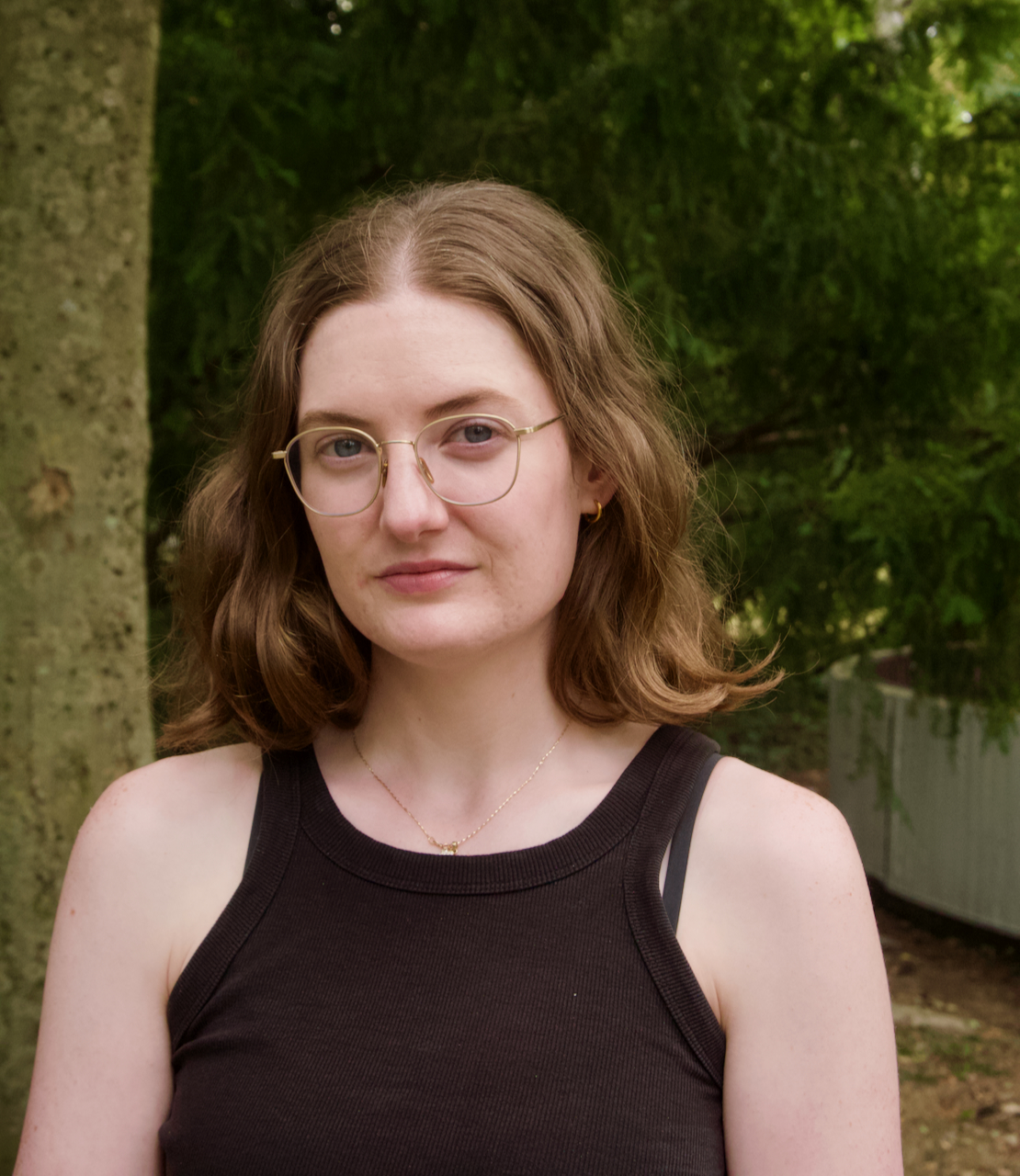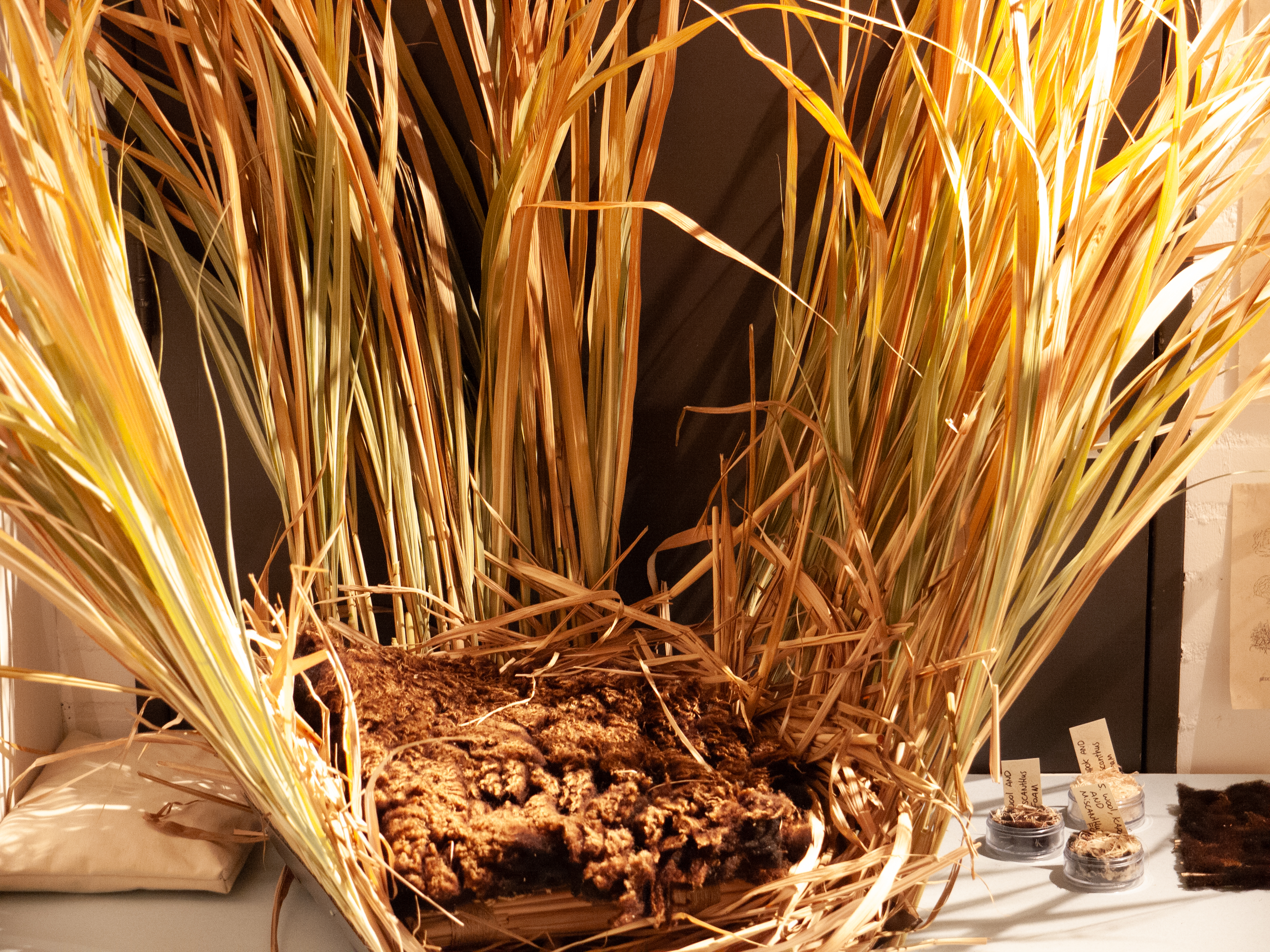Jeanine Verloop graduated from the Illustration department of the Willem de Kooning Academy in 2018. Though trained as an illustrator, her work now spans kinetic sculpture, scientific glassblowing, and interactive installations. Verloop’s practice delves into the limits and potential of machines, often reframing them not as tools of power and precision, but as fragile, fallible, and poetic systems. Through her immersive, multimedia works, she invites viewers to engage with technology in unfamiliar ways. In this interview, she reflects on her journey from drawing to mechanics, her time teaching at WdKA, and how consistent experimentation became the foundation of her artistic career.
How did you end up at WdKA, and why did you choose Illustration?
I first applied to WdKA when I was sixteen, right after high school, but I was told to come back later. So I went to the Graphic Lyceum to study media design, which turned out to be a great step. I got to try lots of things and learn practical skills. I realized I loved making images, but there wasn’t much focus on creating from your own concepts or ideas.
When I was nineteen, I reapplied to WdKA and got in. I was especially drawn to the workshops. At the time, Illustration still focused heavily on drawing - which I loved.
What was your time like at the academy?
In the first year, I followed the program quite neatly, did all the assignments, and passed my propedeuse. But in the second year, the assignments became more open-ended. One project was to represent yourself in a box and I decided to build a print machine. It really shifted my focus - not just on what image you print, but how the production process and the machine itself affect the outcome. I found that super interesting.
I joined the Digital Craft minor, a small and tight-knit group. We’d spend whole days together at the Interaction Station, building things and putting on quick exhibitions. It was such a free space. Sometimes my projects made no sense at all, but that was okay. It gave me the push to start making more in 3D.
At times, I questioned whether Illustration was still the right fit for me. But I realized Illustration is more than just drawing. I still worked with ink and paper, and ultimately, it's about storytelling. That can happen in any medium. The real skill you learn is how to tell stories, whether that’s through lines or light sensors.
What was your graduation project about?
My gradution project revolved around making print machines, but I became increasingly fascinated by the machines themselves, and by how people interact with them. I started dissecting old printers, almost like performing autopsies. I was drawn to machines that weren’t efficient or useful. What happens when a machine doesn’t serve a clear purpose? What kind of stories can it tell?
The project became Reawaken, a kinetic printing machine that I continued to show after graduation. It opened a lot of doors. I was selected for Young Blood and New Talent shows and exhibited the work about twelve times in 2018 and 2019. The questions people asked at those shows helped me develop the work even further.
What happened after graduation? Did you experience a sense of uncertainty?
Definitely, but I wanted structure. I shared a squat studio with former classmates and went there every day from 9 to 5. I spent my time researching electronics and mechanics, sketching, and applying to residencies and open calls. Later on, I applied for grants like the Mondriaan Fund. I had a rule: write or edit grant applications for at least an hour every day.
That consistency really helped. Not just against the uncertainty, but also to keep some emotional distance from the ups and downs of creative work. I’ve tracked my hours since 2018: time spent on autonomous work, emails, residencies. It helps me assess whether a project fee is actually worth my time. Some parts of the year are really intense where I work 70 hours a week, while summer tends to be quieter. It gives me insight into where my time goes and whether I agree with that.
How did you get into teaching?
Some of my former teachers invited me. I had done a few lectures before, but teaching is something else entirely. A position opened up and I took it. It was very special to return to the program I had studied in, and to work with people who had once taught me. During my time as a student, I was quite vocal already, so there was a natural connection with the team.
Teaching gave me insight into my own process. What I loved most was how it motivated me to keep experimenting, to keep playing instead of chasing outcomes. Continuing to learn is so important.
Can you tell us about one of your latest projects?
Right now, I have a solo exhibition at TETEM in Enschede. It grew out of Chime (2024), a work with spiraling glass forms mounted on speakers, producing sound through vibrations. That piece was a catalyst for new experiments including an experimental film that premiered at IFFR, shot at 1000 frames per second with a high-speed camera specialist. The film explores the stretching of time.
The exhibition is called CAOS , it’s a 32-speaker interactive glass installation that uses overlapping frequencies and elements from chaos theory, like the logistic map. The result is a balance of stable and unpredictable interactions. The work decentralizes the human viewer - it’s no longer just about what the audience does, but also how the system behaves on its own.
Interestingly, Chime originally had an interactive element, but it didn’t work out. I had to make some hard decisions and ended up creating an algorithm to determine behavior. That turned out to be even more fascinating. I couldn’t predict what the work would do anymore and that unpredictability made it stronger.
I also noticed how audiences interact differently with my glass works. Some viewers expect them to break, and are disappointed when they don’t. Others get so drawn in they sit down next to the pieces. That kind of response reveals a lot about people’s relationships to objects and fragility.
What kind of maker are you?
I call myself an artist, but I work in the in-between spaces. I’m very drawn to craft, technology, and elements of science. I like combining them.
Making isn’t optional for me. It comes from a deep urge to explore something. I used to worry about having a consistent thread in my work, but now I trust that it emerges as long as I follow my interests. The drive to make and to experiment, that’s what fuels everything.
What was the most valuable part of your time at WdKA?
Time to experiment. I loved hanging around the workshops late at night and not necessarily making anything concrete, but absorbing everything. I’m pretty goal-driven, but in the workshop, I could just observe others, which I found incredibly enriching.
Also, having people around who could poke holes in your plans. Receiving real, thoughtful critique. I’ve tried to create that kind of honest feedback network for myself now, too. I rarely take on projects I’m not fully behind, so feedback tends to be more about details than direction. If something is truly authentic, it’s hard to tear down.
What advice would you give to current WdKA students who want a similar path?
Do the work. It’s a lot of hours and hard work, but that’s not a bad thing if the direction you're moving in fits who you are. Learning new skills takes time and dedication. I don’t want to romanticize that, but you also have to enjoy the experiments and failure. Pay attention to what you resist, that’s often where something valuable is hiding.
There’s no formula for success. But it has to stay fun. Sometimes it’s stressful, but it should be worth it. If you're only doing it for the money, it’s probably better to disconnect making from your income and focus on personal fulfillment instead. You only figure that out by doing.
It’s a marathon, not a sprint. You want to be able to do this for 40 years, so you need a healthy relationship with your work. Which is something you’ll continuously have to figure out, and looks different for everyone. Also, get comfortable working alone. At the academy, you often work in pairs or groups, but many residencies are solo. Being able to work independently is essential.
Want to know more about Jeanine's work? Join her workshop Sounds of Glass with Eva van der Zand on July 6, 2025 at iii at The Hague. More information here.


